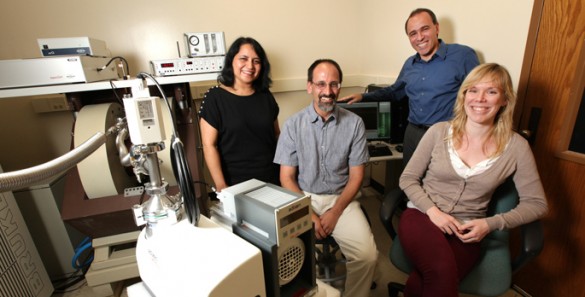Researchers at Vanderbilt University Medical Center and in Brussels, Belgium, have revealed a key mechanism that may help explain antibiotic resistance.
They studied a bacterial membrane protein, called a secondary multidrug transporter, which pumps toxic compounds, including antibiotics, out of the cell, thereby enabling the bacterium to “resist” potentially lethal invaders. This protein binds a wide variety of substances by rapidly changing its conformation, or shape.
Reporting July 11 in the journal Nature Structural & Molecular Biology, Vanderbilt’s Hassane Mchaourab, Ph.D., Cédric Govaerts, Ph.D., of the Université libre de Bruxelles, and their colleagues describe how interactions between the transporter and the lipid bilayer regulate its “conformational dynamics.”
They combined techniques to measure the dynamics of lipid-protein interactions and identify the lipid molecules that tightly bind the transporter. They propose a molecular mechanism that involves the specific interaction of lipid headgroups with a network of charges on the transporter.
Their studies are the first to systematically investigate how membrane lipids regulate transporter function.
This work was supported by the Fonds de la Recherche Scientifique F.R.S.–F.N.R.S. (grant F.4523.12) and the National Institutes of Health (grant GM077659).
Send suggestions for articles to highlight in Aliquots and any other feedback about the column to aliquots@vanderbilt.edu















